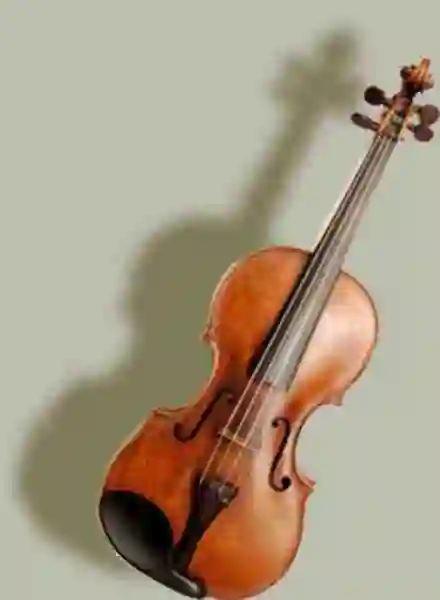Historical development of the violin - Philipp Dangas
Historical development of the violin
The Indian Ravastron is usually mentioned as the oldest verifiable stringed instrument. It reached Spain in a somewhat more developed form via Persia and the ancient Arabic culture, where it can be identified as early as 800 under the name Rebec. The Rebec was related to the Celtic Crwth, which in turn corresponded to the old Germanic Rotte.
No stringed instruments have survived from Greek and Roman antiquity. In Germany, at the time of the Crusades, the gige and fidel were popular instruments for minnesingers and traveling minstrels. Both types resembled each other.
As the actual predecessor of today's stringed instruments, the viola appeared in the 13th century, in 2 types, namely as viola da gamba (i.e. "knee fiddle", after the Italian: gamba = knee), called "gambe" for short, and as viola da braccio (i.e. "arm fidel", after the Italian: braccio = arm ). DThe further development of the viola da braccio in the 16th century led to the emergence of the violin in its current form. It developed from the treble form of the viola da braccio, whose main or main instrument was in the alto register of today's viola.
The name "Violin" is the German form of the Italian name "violino", which was created by adding the Italian diminutive "ino" to the name Viola, i.e. something like „little viola“ In Germany, however, the name violin, derived from “gige”, was also used for this new instrument, which had previously been used for the viola da braccio.
Violin making first appeared in Italy. Als erster Violinbauer gilt Gasparo da Salò from Brescia (1542-1609) is considered the first violin maker. Another famous violin making center in Italy was Cremona. The most notable representatives of the Cremona school were Nicolo Amati (1596-1684), Antonio Stradivari (1644-1736) and Giuseppe Antonio Guaneri (1687-1745). In Germany, the so-called Tyrolean school emerged in the early days of Italian violin making. Its heyday was between 1640 and 1712 and its most famous representatives were Jakob Stainer in Absam (1621-1683) and the Klotz family of violinmakers in Mittelwald.
Download size: 249 kilobytes
Table summary of violin use in music
The table below lists the violin music that is often used shown. Musical works with the name of the composer, the work and the genre are performed.

The violin in large representation
The components of the violin
- Bridge
- Neck
- Fretboard
- Strings
- F-Holes
- Soundboard
- Chinrest
Internal search function
| Name | Value | Delete |
|---|